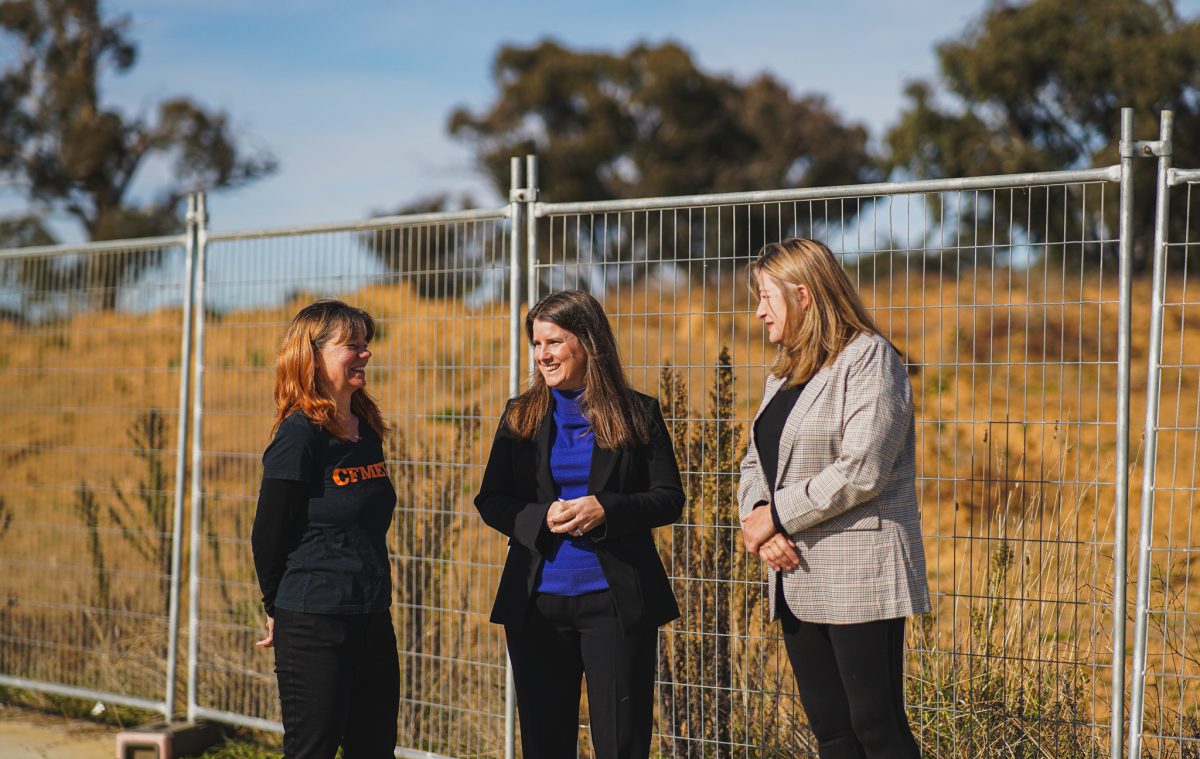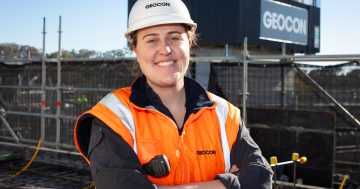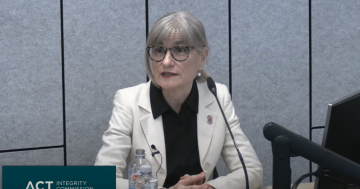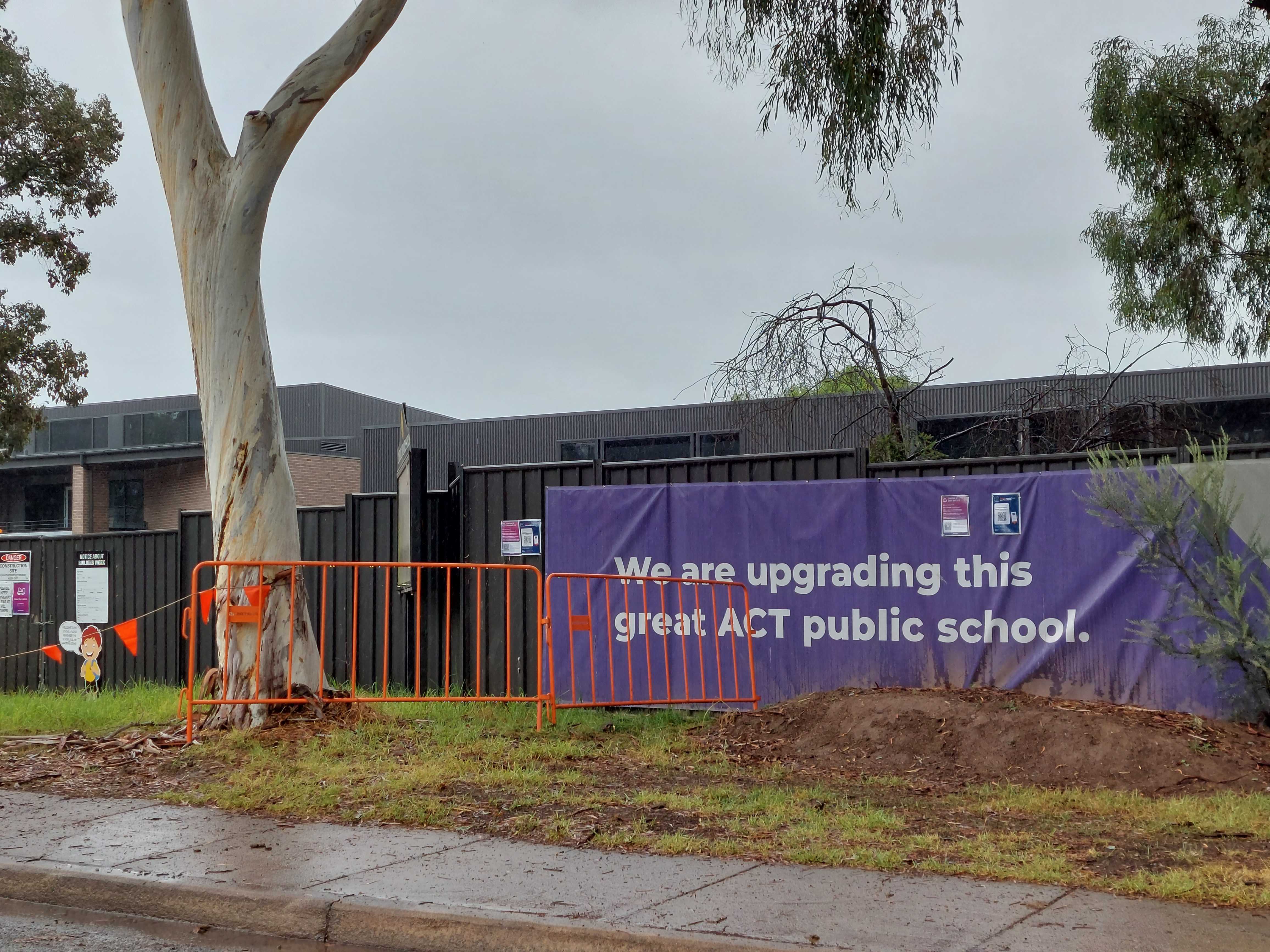
Minister for Women Yvette Berry (right) with CFMEU industry coordination officer Niki Shephard and National Association of Women in Construction ACT co-chair Katherine Harris. Ms Berry says she’s taking the glass-half-full approach to finding a company that can satisfy the gender quota. Photo: ACT Government.
The ACT Government’s plan to restrict the tenders for a new primary school build in Canberra’s north based on gender has been lauded as admirable by an industry insider, but he says it’s unlikely to achieve its intended aim.
According to Stephen Shelton of construction recruitment agency Canberra Labour Hire, the conditions imposed on the procurement will simply mean taxpayers end up spending more.
Yesterday, Minister for Women Yvette Berry announced that the successful tenderer for the soon-to-be-built school in Strathnairn would require a 100 per cent female management team on-site, and every trade sub-contractor used for the job would be required to employ at least one woman.
Ms Berry defended the plan yesterday, arguing the tender process would be both fair and competitive, despite the conditions imposed on it.
“We’ve got every opportunity to be selective on gender right now,” she said.
“This is a push to make sure the construction industry starts really actively looking for female workers within their trades and within their management teams. I’m confident that we will get significant interest in this work and that the construction companies that do apply will be able to meet the requirements that we’ve placed on this project.”
But unlike the Minister’s self-professed “glass-half-full” approach, Mr Shelton thinks this procurement approach will mean the government is left paying more.
This is because Mr Shelton is unconvinced many, if any, local companies would be able to satisfy the government’s conditions.
“What happens is that big, interstate companies will come in and they bring with them their bigger, interstate prices because they can bring in their female employees from around the country,” he says.
“There’s not a chance this will save us a cent.
“And it also won’t help with the issue of getting women into construction and construction management roles in Canberra.”
Around 2.6 per cent of construction workers in the Territory are female – a number the government says it wants to quadruple in the coming years.
Mr Shelton expressed some confusion about why the government would attempt such a restricted procurement process at a time when the construction industry is grappling with chronic worker shortages which are only being exacerbated by the pandemic.
That’s not to say he’s against what he described as the government’s “ticking the boxes” exercise entirely, noting it is trying to “lead by example”.
Right now, Mr Shelton estimates around 2 to 5 per cent of his employees are women, and he says the biggest barrier to getting more female representation in the construction industry is culture and stereotypes.
“A lot of the time, when I send female workers onto job sites, I will get a call almost immediately to be asked why I’ve sent along a girl,” he says.
“My response every time is to say I haven’t sent along a girl, I’ve sent along a resource. They have a job to do and if they can’t do it well, then call me back and let me know.”
Almost every time, Mr Shelton gets an apologetic phone call back only a couple of hours later.
“In many cases, that’s because they are more consistent, more reliable and sometimes stronger than the blokes.”
These days, Mr Shelton says he’s actively looking out for female workers to bring on board.
But the trouble is it’s proving a challenge to get anyone in – no matter what gender.
A low unemployment rate and a cushy employment market mean Mr Shelton has trouble finding anyone who wants to fill the more physically demanding roles like general labourers.
“I’m not even all that sure it’s a skill shortage – it’s just a worker shortage at this point,” he says.
And with COVID-19 cases to soar in the next few weeks, that worker shortage is only going to get harder to manage.





















